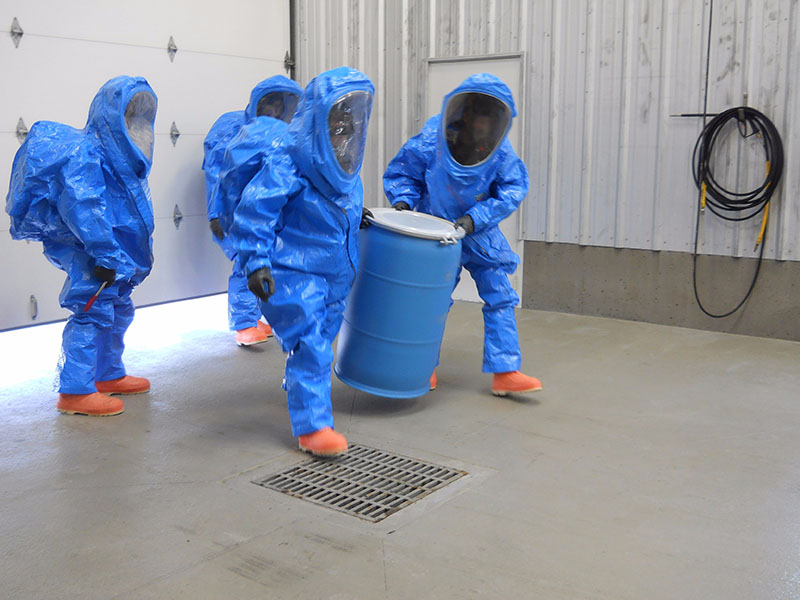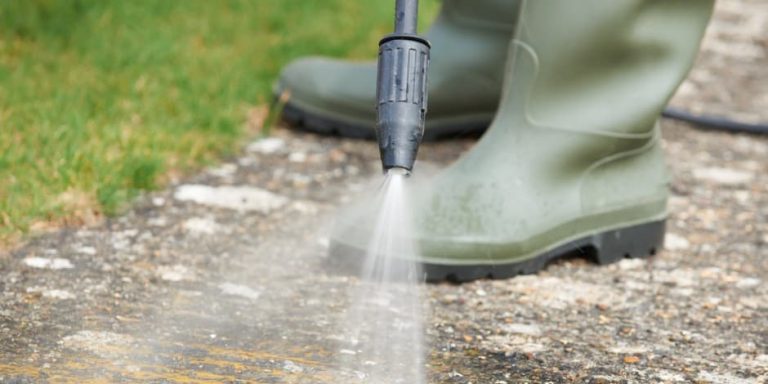
When you think of power washing, you probably picture clean sidewalks, gleaming storefronts, or freshly scrubbed patios. But what most people don’t see is what happens after the wash—especially when something goes wrong. Power washing accidents involving chemical spills, fuel leaks, or uncontrolled runoff can lead to serious environmental harm, particularly if there’s no emergency response protocol in place. 🧪🌊
In this article, we’ll break down how proper spill response planning not only protects your business from fines and liability but also helps prevent pollution of waterways, contamination of soil, and harm to wildlife.
🚨 What Counts as an “Environmental Emergency” in Power Washing?
Even a small incident—like spilling a degreaser or letting soapy water enter a storm drain—can become an environmental emergency if it poses a threat to:
- Aquatic ecosystems
- Drinking water sources
- Protected land or species
- Soil or plant life
Examples of such events include:
- A power washing unit leaking fuel near a storm drain
- Chemical runoff entering a creek during cleaning
- Acidic cleaners spilling onto soil or grass
- Soapy residue flowing into municipal drains
Without an immediate and organized response, these accidents can trigger fines, environmental cleanup mandates, and legal consequences.
🧰 Why Spill Response Protocols Matter
A proper emergency spill response plan can make all the difference between a minor hiccup and an ecological disaster. These protocols ensure:
- Fast, safe containment of pollutants
- Proper notification of authorities
- Use of protective gear for personnel
- Appropriate disposal of hazardous waste
- Documentation to show regulatory compliance
Without these systems in place, your crew may panic, delay, or act incorrectly—leading to escalation of environmental harm. 📉
📦 Components of an Effective Spill Response Plan
Every power washing operation—whether mobile or stationary—should have a detailed and site-specific spill response protocol. Key elements include:
✅ 1. Spill Kit Contents
- Absorbent pads and mats
- Chemical-neutralizing agents
- Personal protective equipment (PPE)
- Portable containment berms
- Wet vac or pump for recovery
- Disposal bags labeled “Hazardous Waste”
💡 Keep spill kits in every truck or trailer—inspect monthly.
✅ 2. Team Training
- How to stop the source of a spill
- How to safely contain and absorb waste
- When to notify supervisors or call emergency services
- Use of MSDS (Material Safety Data Sheets) for chemicals
Training should occur at least annually, with updates as chemicals or equipment change. 🧠📋
✅ 3. Incident Reporting
- What was spilled, how much, and where
- How the spill was contained
- Cleanup methods used
- If and when authorities were notified
- Photos or witness statements
Proper documentation protects your business and can help improve future safety planning.
✅ 4. Clear Reporting Protocols
Know who to contact and how, including:
- Local environmental protection agencies
- Water utility departments
- EPA National Response Center (for major spills)
Post contact numbers inside all vehicles and on job site safety plans. 📞📍
💸 The Cost of Not Being Prepared
Here are real-world consequences of poor spill management:
- 💰 $5,000 fine for letting degreaser enter a storm drain in California
- 🐟 Fish kill in a Texas creek after bleach runoff from a commercial roof wash
- 📰 Negative press coverage for an HOA after runoff from pressure washing reached a wetland buffer
In each case, proper response protocols could have minimized damage and reduced penalties.
🧠 Final Thoughts
Having a power washing emergency spill response protocol isn’t just best practice—it’s an ethical and legal necessity. In a world where environmental stewardship matters more than ever, companies must be prepared to act quickly and responsibly.
Don’t wait for an accident to expose your weaknesses. Plan ahead, equip your teams, and make eco-conscious emergency response part of your operational DNA. ♻️🧯
Browse Amazon Here For Top Rated Power Washers And Accessories






